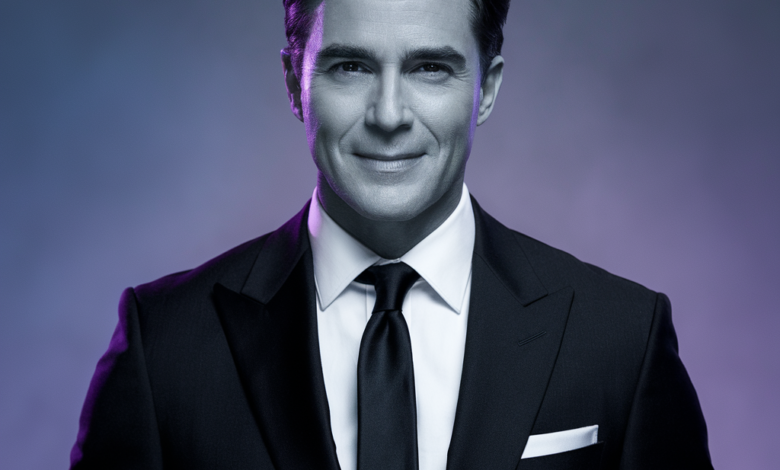Daylin Ryder: The Rising Star Redefining Contemporary Art and Activism

Introduction
In an era where art and social consciousness increasingly intersect, Daylin Ryder has emerged as a compelling voice, blending evocative visual storytelling with unflinching activism. Known for their mixed-media installations, provocative performance art, and community-driven projects, Ryder challenges viewers to confront pressing issues from climate justice to systemic inequality—through immersive, often participatory experiences. Their work transcends traditional gallery spaces, spilling into streets, digital platforms, and public forums, making art accessible while demanding engagement. This article explores Ryder’s artistic journey, signature methodologies, major works, and the profound impact they’ve had on both the art world and grassroots movements.
1. The Making of a Multidisciplinary Artist: Daylin Ryder’s Formative Years
Daylin Ryder’s path to artistic prominence was anything but conventional. Growing up in [hometown/city], they were steeped in a milieu of grassroots activism and DIY culture, which later became foundational to their practice. Early experiences—such as organizing community murals or documenting local protests with a disposable camera—shaped their belief in art as a tool for collective transformation. After studying [relevant discipline, e.g., “Social Practice Art” at XYZ University], Ryder rejected the elitism of traditional art institutions, opting instead for a nomadic approach. They cite influences ranging from Joseph Beuys’ social sculptures to the guerrilla aesthetics of the Yes Men, blending these with contemporary digital activism to create a style that’s both urgent and deeply personal.
2. Art as Action: The Core Themes of Ryder’s Work
Ryder’s oeuvre is a tapestry of interconnected themes, each interrogating power structures and envisioning alternatives:
-
Ecological Grief and Repair: Projects like “The Mourning Archive” (a series of funeral rituals for extinct species) merge art with environmental direct action.
-
Bodily Autonomy and Queer Futurity: Their “Flesh Maps” installations use bio-responsive materials to explore gender fluidity and medical sovereignty.
-
Radical Accessibility: By hosting exhibitions in abandoned warehouses or via augmented reality, Ryder democratizes who gets to experience—and define—”high art.”
These themes coalesce around a central question: How can art not just represent change, but catalyze it?
3. Notable Projects: Where Art Meets Impact
Ryder’s portfolio reads like a manifesto-in-progress. For “Assembly Required” (2022), they transformed a bankrupt shopping mall into a participatory museum where visitors rebuilt crumbling sculptures to critique consumer culture. Collaborating with climate scientists on “Carbon Quilt”, Ryder stitched data on industrial emissions into massive textile panels, later used as protest banners. Their most controversial work, “Algorithmic Bloodlines”, exposed facial recognition biases by projecting the faces of ICE detainees onto government buildings—a project that sparked both acclaim and legal backlash. Each piece operates on multiple levels: as aesthetic object, social experiment, and call to arms.
4. Methodology: How Ryder Creates (and Disrupts)
Ryder’s process is intensely collaborative, often involving community workshops, hacker collectives, or even chance encounters. For “The People’s Palette”, they crowdsourced pigments from soil samples mailed by global participants, creating paints that literally embodied displaced histories. Technology plays a dual role: used to amplify marginalized voices (e.g., blockchain-based art trusts for Indigenous communities) or to subvert surveillance systems. Notably, Ryder refuses to patent any of their techniques, insisting that “artistic tools belong to the commons.” This ethos extends to their teaching, where they mentor incarcerated youth via virtual reality studios.
5. Criticism and Controversy: Challenging the Art World Status Quo
Daylin Ryder’s work isn’t without detractors. Some accuse them of “poverty tourism” for projects involving unhoused communities, while others argue their reliance on trauma narratives risks aestheticizing suffering. Galleries have balked at their demand to abolish entry fees, and collectors bristle at their policy of auctioning works only to fund mutual-aid networks. Ryder remains unapologetic: “If your art doesn’t unsettle the systems you benefit from, what’s it for?”
FAQ: Understanding Daylin Ryder’s Practice
Q1: Where can I experience Ryder’s art in person?
A: Follow their decentralized exhibition model via @RyderRadical on Instagram—they announce pop-ups in unexpected locales, from subway tunnels to drought-stricken farms.
Q2: How do they fund such large-scale projects?
A: Through a mix of grassroots grants, Patreon supporters, and “solidarity pricing” (where institutions pay sliding-scale fees based on their endowment size).
Q3: Has Ryder’s work led to tangible policy changes?
A: Yes. “The Bail Out Project” (where art sales posted bail for protesters) helped shift narratives around cash bail reform in three states.
Q4: What materials do they use?
A: Everything from biodegradable mycelium to hacked government datasets—Ryder calls it “post-disciplinary bricolage.”
Q5: How can emerging artists adopt Ryder’s ethos?
A: They advise: “Start by asking who your art excludes, then burn that door down.”
Conclusion
Daylin Ryder doesn’t just make art—they engineer cultural wildfires. By erasing boundaries between creator and audience, object and action, they redefine what art can do in an age of crisis. Whether through a pixel or a protest, their work insists that imagination isn’t a luxury but a lifeline. As Ryder puts it: “The future isn’t something we wait for. It’s something we build, one disobedient artwork at a time.”



